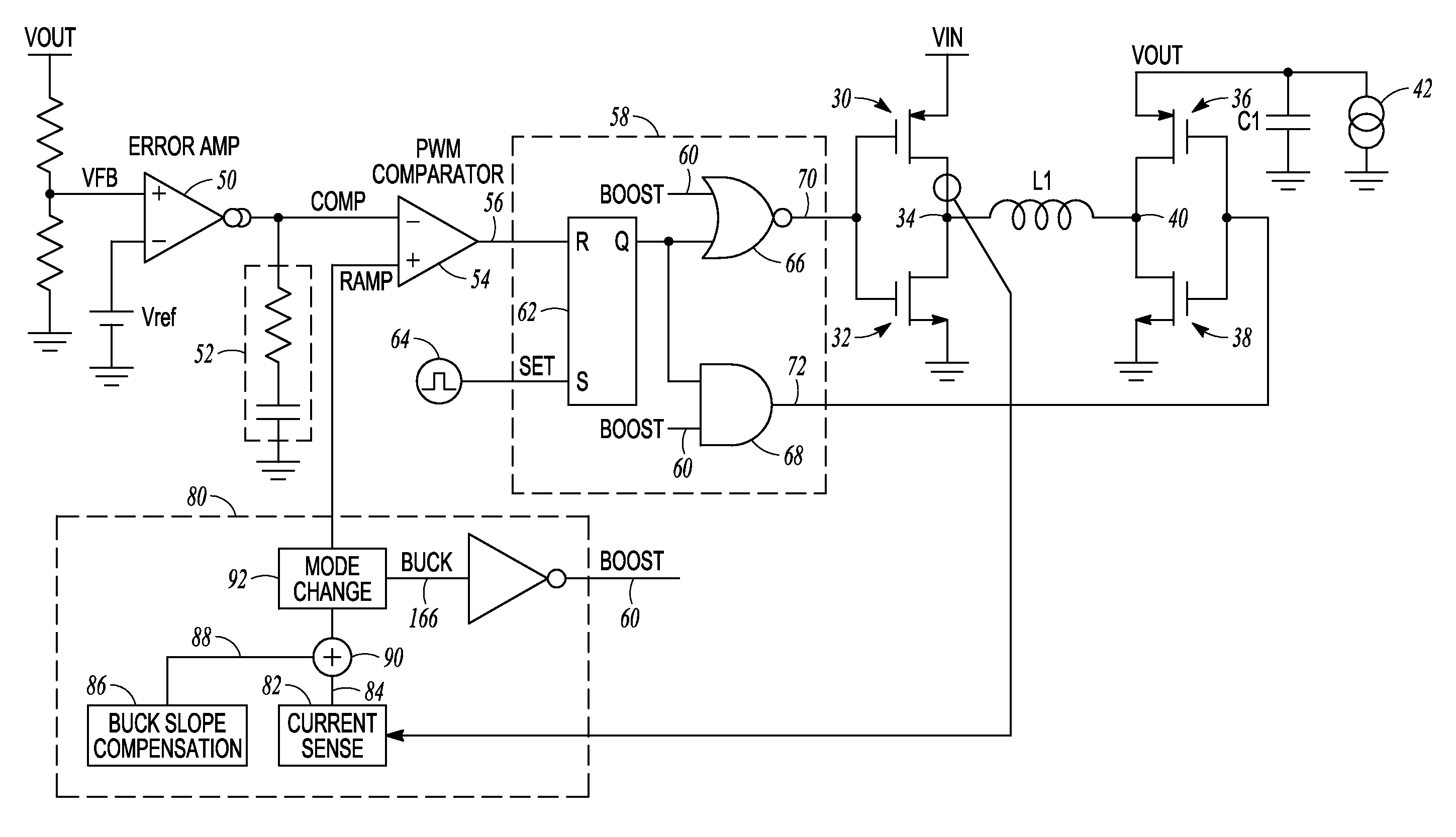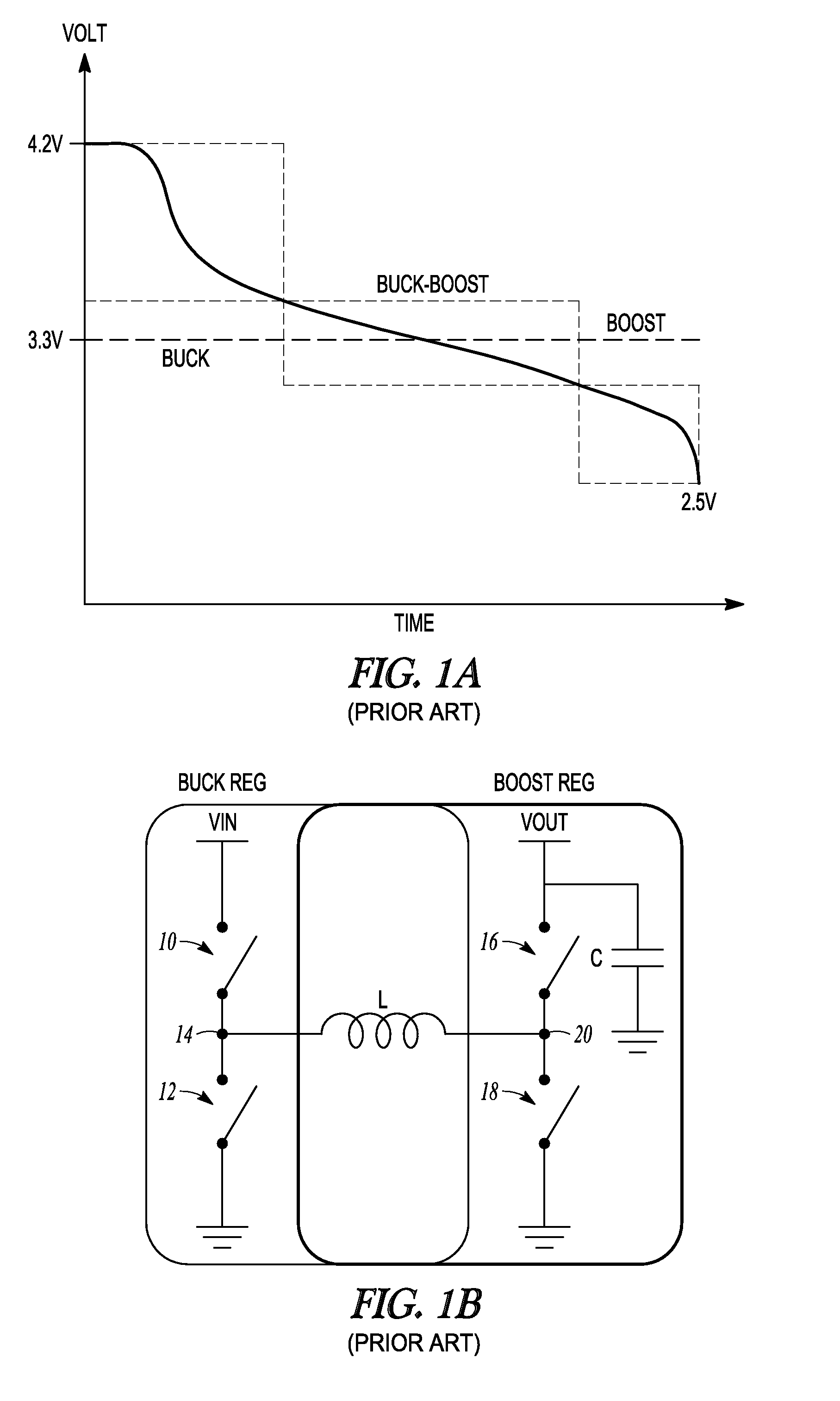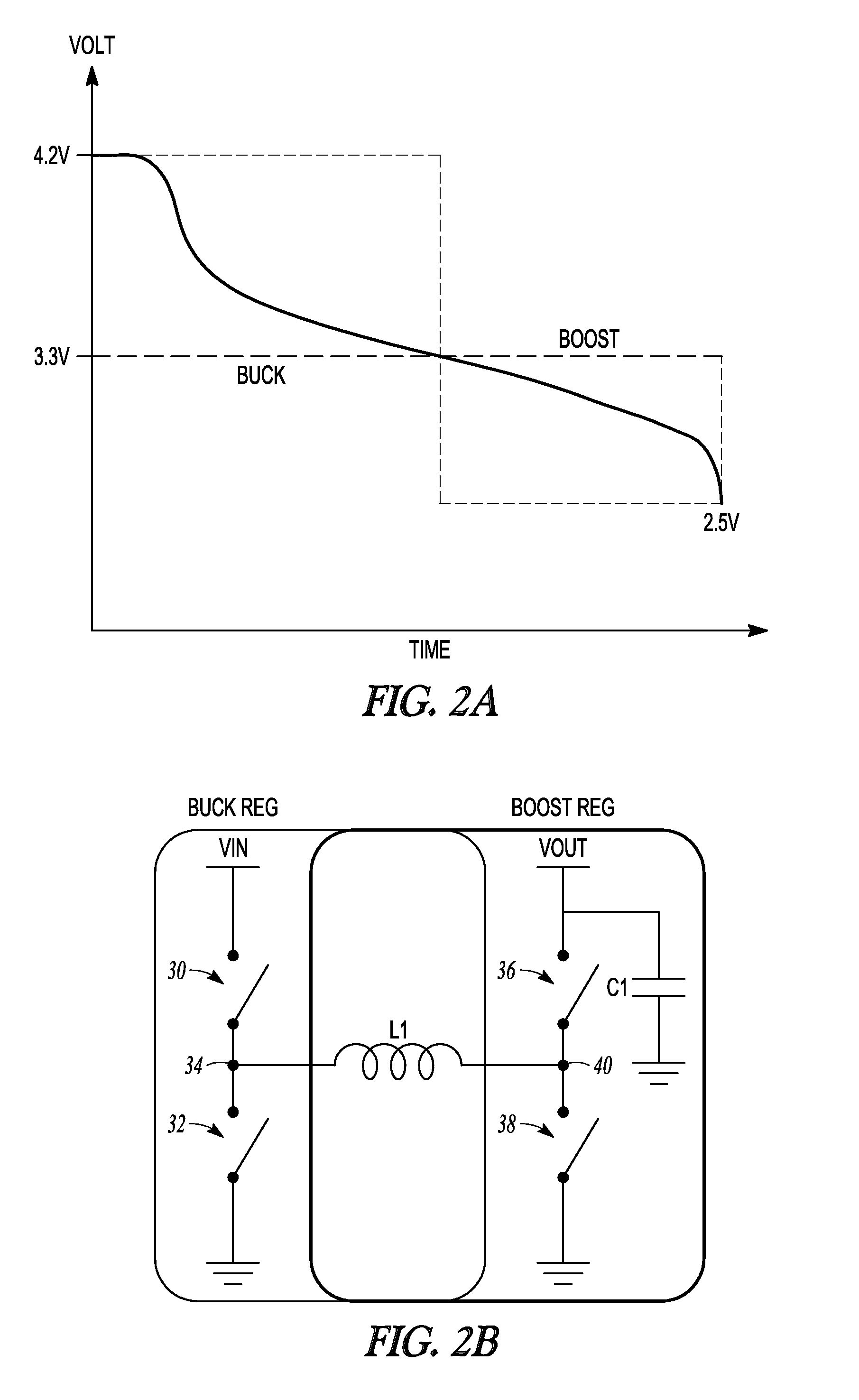Windowless H-bridge buck-boost switching converter
a buck-boost and converter technology, applied in the field of buck-boost switching converters, can solve the problems of buck-boost mode typically not being sustained, buck-boost mode typically not being able to continue working, and poor efficiency when operating in buck-boost mode. , to achieve the effect of reducing the number of mode transitions, and improving efficiency
- Summary
- Abstract
- Description
- Claims
- Application Information
AI Technical Summary
Benefits of technology
Problems solved by technology
Method used
Image
Examples
Embodiment Construction
[0028]A diagram illustrating switching converter operating mode vs. input voltage for a windowless buck-boost switching converter per the present invention is shown in FIG. 2a. The present converter architecture has only 2 operating modes—buck and boost—which serves to reduce efficiency problems found in conventional buck-boost converters, while also minimizing output discontinuities. The converter uses an H-bridge configuration as shown in FIG. 2b, with two switching elements 30, 32 connected together at a node 34 and between VIN and a circuit common point, and two switching elements 36, 38 connected together at a node 40 between VOUT and the circuit common point. An inductor L1 is connected between nodes 34 and 40, and a filter capacitor C1 is connected between VOUT and circuit common. For the present converter, in buck mode, switching element 36 is closed and switching elements 30 and 32 are switched on and off in complementary fashion, typically with pulse-width modulated (PWM) ...
PUM
 Login to View More
Login to View More Abstract
Description
Claims
Application Information
 Login to View More
Login to View More - R&D
- Intellectual Property
- Life Sciences
- Materials
- Tech Scout
- Unparalleled Data Quality
- Higher Quality Content
- 60% Fewer Hallucinations
Browse by: Latest US Patents, China's latest patents, Technical Efficacy Thesaurus, Application Domain, Technology Topic, Popular Technical Reports.
© 2025 PatSnap. All rights reserved.Legal|Privacy policy|Modern Slavery Act Transparency Statement|Sitemap|About US| Contact US: help@patsnap.com



